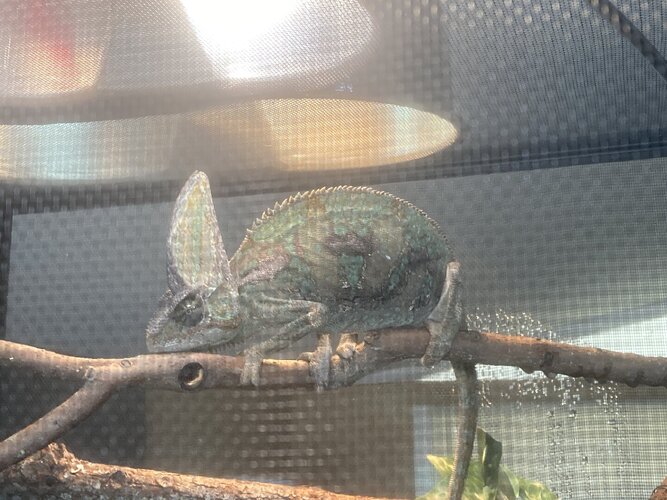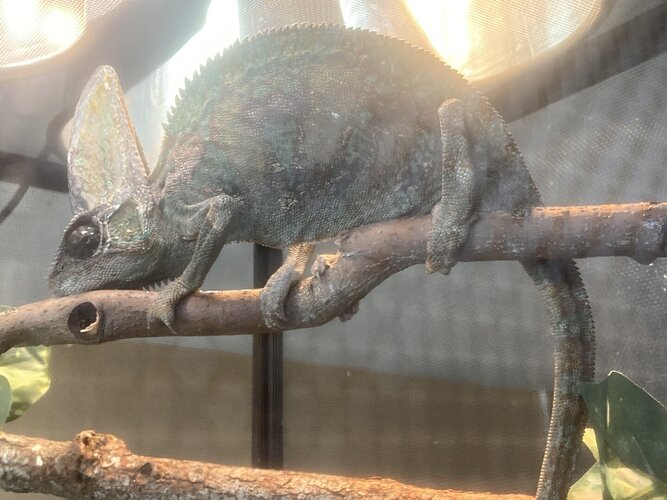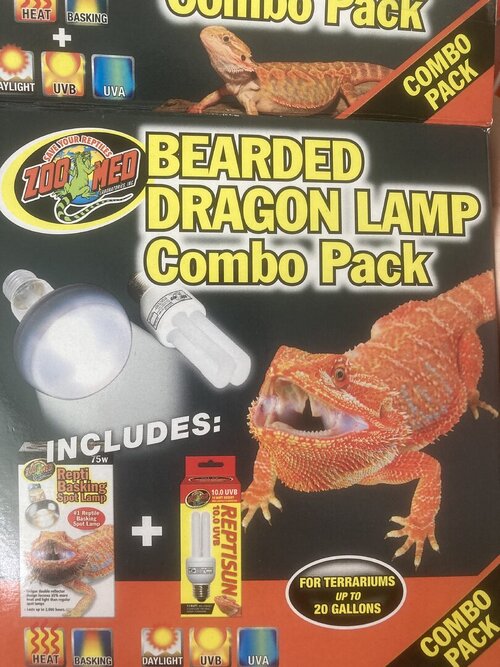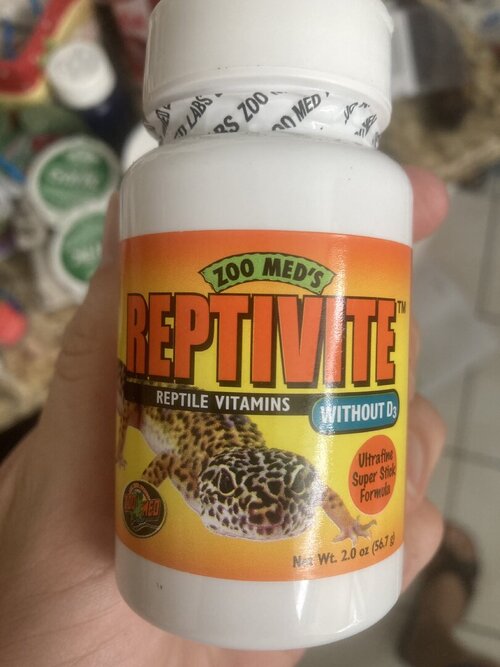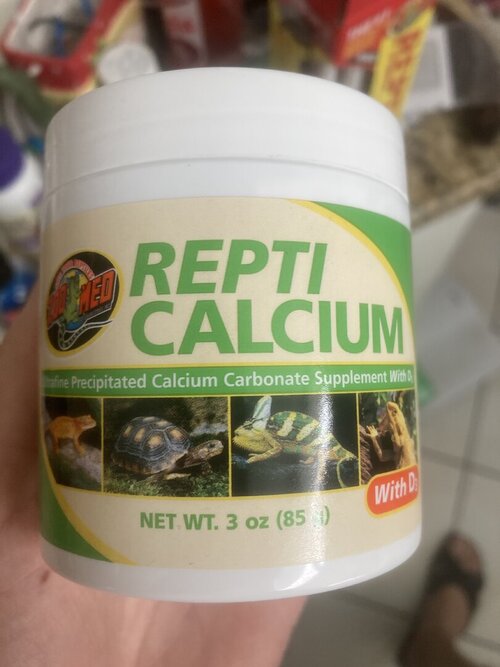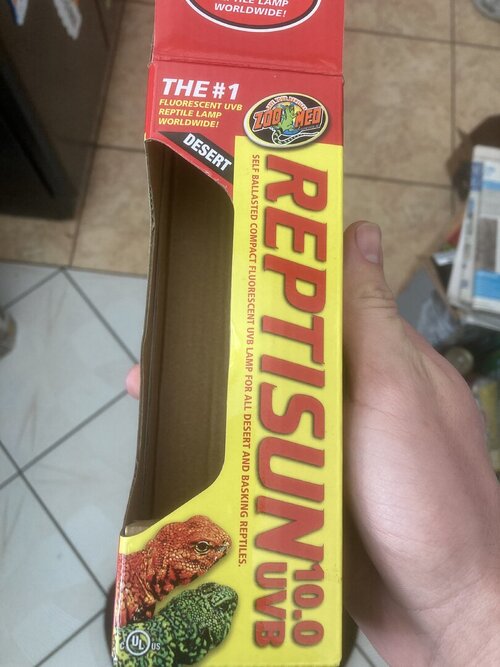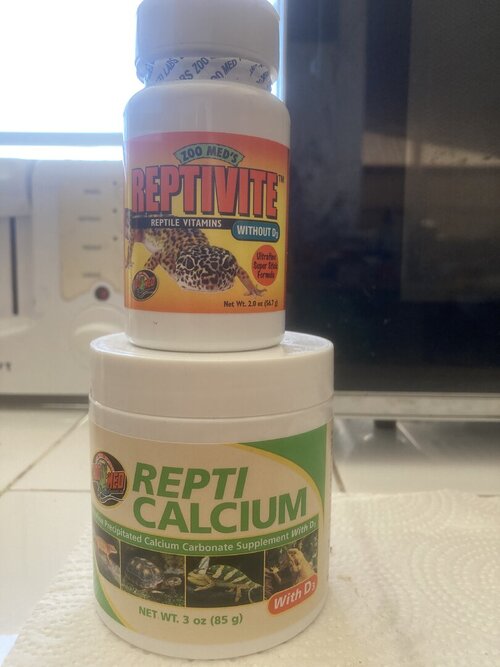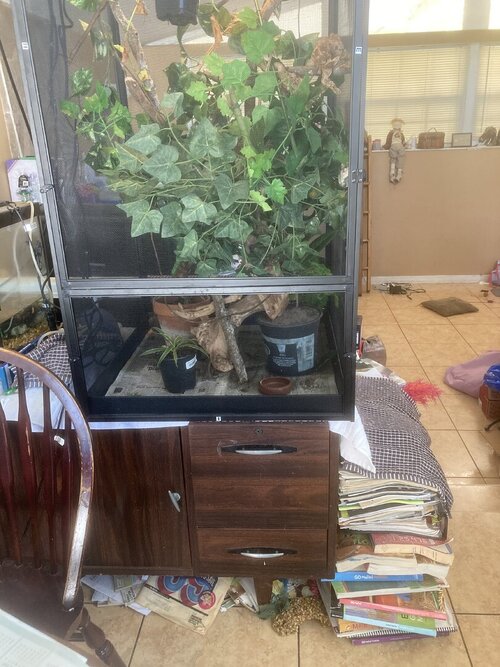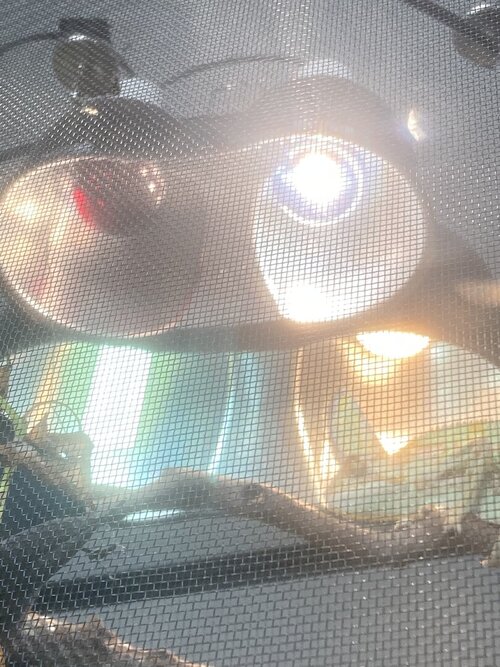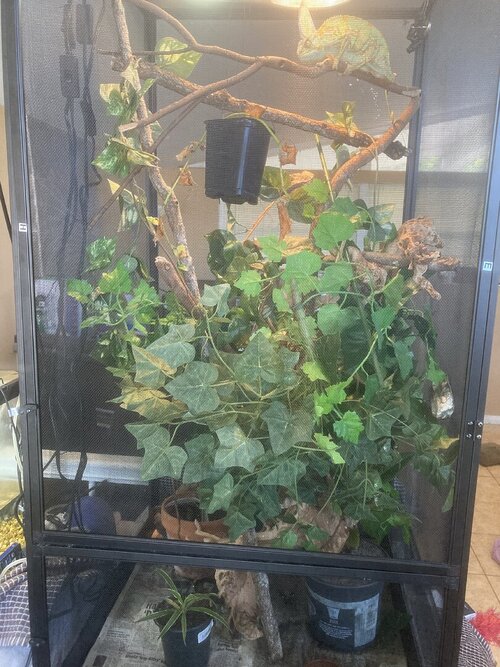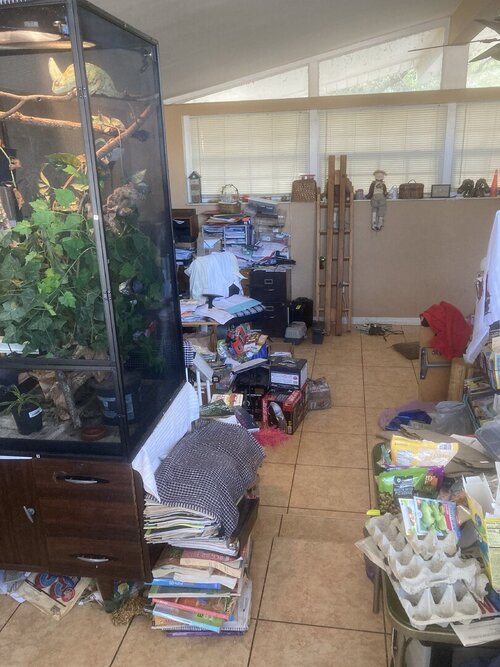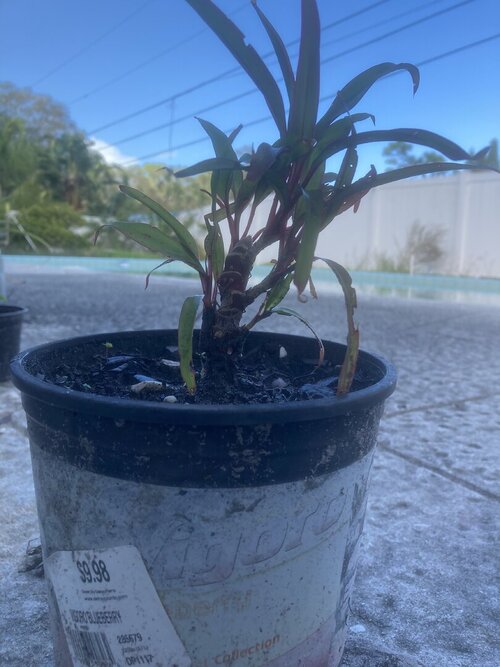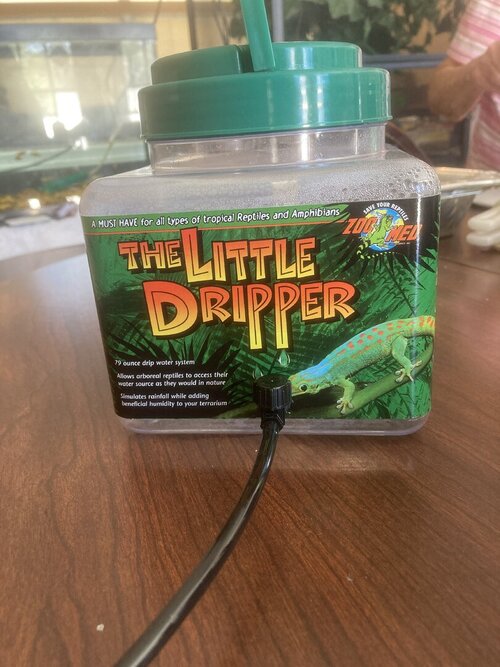Zove
New Member
So I recently got this M. Veiled chameleon from someone who claims it was bred in captivity, but the way it acts makes me think it was wild caught. He was doing fine and very active until recently. I put some super worms in his enclosure, and I’m pretty sure he ate them as the substrate is newspaper and I would see them moving around. But ever since then he’s just been sitting up top by the lamps. Almost always asleep and only moves in or out of the heat. He doesn’t go down and I’m worried. He also refuses to eat much. I’ve tried to get him some other food sources like roaches but they are illegal where i live so it’s been a pain.

